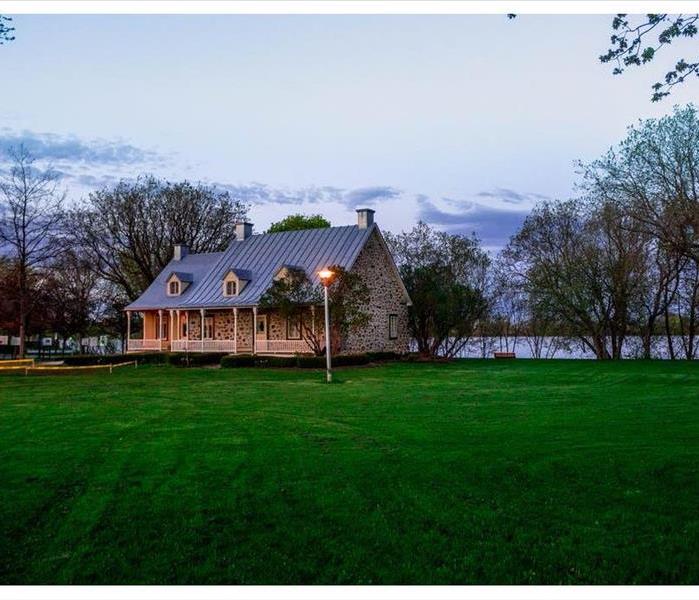Help Prevent Flooding With These 3 Landscaping Features
12/26/2021 (Permalink)
Protective Landscaping Features
Rain can be a welcomed sight, but a flooded yard is not. To keep your lawn from becoming a swamp, here are three landscaping features to help you disperse outside flooding.
A Driveway Built for Drainage
The two most commonly used materials for driveways are concrete and asphalt. These pavements don’t allow water to seep into the ground. This creates a lot of runoff with nowhere to go. Here are some ideas for getting good rain drainage when installing a driveway:
Channels on sides of concrete/asphalt driveways to catch and redirect runoff
Covered drains in-between concrete slabs to let water slip through and absorb into the ground
Paving stones with spacing for water seepage as a pleasingly aesthetic alternative
Gravel as a classic, budget-friendly option
By making wise design choices, you can build a driveway that helps prevent outside flooding.
A Leveled Yard
Keep floodwater out by leveling your yard. Low areas in yards are where flooding happens most. Fill them in with topsoil to keep water from pooling. The high points of your yard should be around your home and then gradually slope away, keeping storm runoff from your foundation. Low points near the house can lead to water in your basement. If this happens, call your local storm damage experts and ask for future prevention advice during your assessment.
A Strategically Placed Swale
A swale is any type of “ditch” that redirects rainwater away from your home. It is often integrated into lawns as a water feature. A swale does not only move rainwater but slows it down and allows it to seep into the ground. Planting shrubs along its edges and laying stones in the bottom of a swale helps it slow and disperse water even more.
Making smart design decisions and preparing for the storm season in Katy, Texas, will help you prevent outside flooding and enjoy your lawn, even after heavy rain.






 24/7 Emergency Service
24/7 Emergency Service
